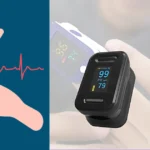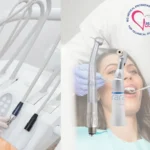A dental X-ray is an imaging technique used to view the internal structures of the mouth, including the teeth, gums, and jawbone. It involves using a small amount of radiation to produce images (radiographs) that help identify dental issues that cannot be detected through a routine visual examination.
X-rays have been a part of dental practice for over a century and remain one of the most powerful tools for diagnosing and treating oral health issues. They provide vital information about the health of your teeth and surrounding structures, allowing your dentist to catch problems early and prevent complications.
How Dental X-Rays Work
Dental X-rays work by passing a controlled amount of radiation through the body. The radiation passes through soft tissues like gums and cheeks, but it’s absorbed by denser materials like teeth and bone. A sensor or film placed inside the mouth captures the rays that pass through, creating a detailed image.
This image is then reviewed by the dentist to assess the health of your teeth, bones, and gums. Modern dental X-rays use digital sensors rather than traditional film, providing faster results and reducing radiation exposure. Digital X-rays can be easily stored, enhanced, and shared electronically, improving both accuracy and convenience.
Types of Dental X-Rays
There are several types of dental X-rays, each designed to provide a unique view of your teeth and mouth. Your dentist will determine which type is needed based on your symptoms, risk factors, and the area of concern.
1. Intraoral X-Rays
These are the most common type of dental X-rays, where the sensor or film is placed inside the mouth. They provide detailed images of the teeth and surrounding structures and can detect cavities, gum disease, infections, and even bone loss.
a. Bitewing X-Rays
These show the upper and lower teeth in one area of the mouth and are typically used to detect cavities between teeth or bone loss due to gum disease.
b. Periapical X-Rays
These provide a full image of an entire tooth, from the crown to the root, including the surrounding bone. They help in detecting issues such as abscesses or bone damage.
c. Occlusal X-Rays
These images show the floor or roof of the mouth and are used to detect issues in the jaw or teeth alignment.
2. Extraoral X-Rays
As the name suggests, extraoral X-rays are taken outside of the mouth. These focus on the teeth, jaw, and skull and are typically used for more complex diagnostics, such as assessing alignment or detecting abnormalities.
a. Panoramic X-Rays
These provide a broad view of the entire mouth, including all teeth, jaws, and sinuses, in a single image. They are often used for planning orthodontic treatment, detecting wisdom teeth, and identifying cysts or tumors.
b. Cephalometric X-Rays
These are side-view X-rays of the head, commonly used by orthodontists to analyze jaw positioning and detect structural abnormalities.
Are Dental X-Rays Safe?
While dental X-rays involve exposure to radiation, the amount is very low and considered safe for most people. Modern digital technology has drastically reduced radiation levels, making it even safer than traditional film-based X-rays.
Dentists take every precaution to minimize exposure, such as using lead aprons and thyroid collars. Additionally, X-rays are only taken when necessary, ensuring the benefits outweigh the potential risks.
For pregnant women, special care is taken, and dental X-rays are generally avoided unless absolutely necessary. If required, extra steps are taken to ensure the safety of both mother and baby.
Conclusion
Dental X-rays are an invaluable tool in modern dentistry. They help detect cavities early, plan treatments, monitor bone health, and uncover hidden issues before they become serious. By using X-rays, dentists can provide more accurate, proactive, and effective care to ensure long-term oral health.




